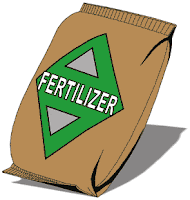Amphora sp. are marine diatoms that thrive in a benthic environment unlike regular free swimming algae that lay suspended in the water column, Amphora sp. rest within the substrate and continue to grow even in small amount of light exposure. Thus, being heterotrophs, Amphora sp. are mainly researched as a potential mass culture due to its low light requirement. This genus can be easily identified by their pennate shape either singular or paired.
Amphora sp. is mainly used in mollusc culture as they cell wall is made up of silica which is the main compund that aids in the shell development of mollusc. Based on our experiment on their growth rate and density will enable us to better understand the potential use of Amphora sp. as a live feed for mollusc larvae.
Materials and Methods
A) Preparation of algae medium
F/2+silicate is used for this microalgae as it requires silicate to develop its cell wall. Firstly, 500ml culture medium was poured into a 1L flask and autoclaved for decontamination. Once cooled, about 100ml was poured into a 500ml conical flask as a culture medium.
B) Calculate cell density
The cell density of the stock culture was counted using a Haemocytometer as this will enable us to determine the suitable amount to be used as a starter culture. Next, the density and volume of stock culture needed is calculated using the formula C1V1=C2V2 and required volume is added into our prepared culture medium.
C) Microalgae culture
The prepared culture is place under illumination and provided a low aeration to allow equal nutrient absorption for the mircoalgae. A sample is taken daily to determine the density of the microalgae and a graph is made at the end of the experiment.
*diagrams are located in appendix*
Results
Day
|
Cell density (cell/mL)
|
SGR
|
Doubling time (tg)
|
0 (18/9)
|
58,750
|
-
|
-
|
1 (19/9)
|
5.78x106
|
4.58
|
0.151
|
2 (20/9)
|
3.53x106
|
-0.49
|
-1.42
|
3 (21/9)
|
1.25x106
|
-1.04
|
-0.667
|
4 (22/9)
|
1.03x106
|
-0.19
|
-3.65
|
5 (23/9)
|
1.02x106
|
-0.009
|
-77.08
|
6 (24/9)
|
1.02x106
|
0
|
0
|
7 (25/9)
|
1.2x105
|
-2.14
|
-0.32
|
8 (26/9)
|
6.5x104
|
-0.61
|
-1.14
|
9 (27/9)
|
6.3x104
|
-0.031
|
-22.36
|
10 (28/9)
|
6.2x104
|
-0.016
|
-43.32
|
The graph above shows the growth curve of Amphora sp.
Discussion
Based on the data collected for 10 days, we can see that the growth rate of the Amphora sp. multiplies greatly at day 1. There is a few possible reasons why the algae grows rapidly at early stage, this is maybe due to the very high growth rate. The other reason is that it is possibly due to the miscalculation during the cell count of the microalgae itself. Because Amphora sp. characteristic is benthic, it is their nature to settle down at the bottom of the flask and clumps up. This is also could be the cause of miscalculation of their growth rate. Amphora sp. usually do not receive a very strong light source since they live mostly at the bottom. However in the laboratory, they are placed right beside the lamp therefore received a strong light source that may change their normal growth.
A few ways to overcome the problems is to stir or swirl the flask a few times before counting the cell density or provide a slightly higher aeration for the microalgae. Another way is to make a replicate (at least 3) to find an average counts of the cell so that more accurate results can be produced. However, replicates could not be provided due to shortage of the stock culture itself therefore only one flask of culture can be experimented and observed.
Conclusion
Amphora sp. grow at its highest rate at day 1 which is 5.78x106 cell/ml. The growth of the microalgae is successful but they grow and collapses too rapidly.
Appendix
 |
| Diagram 1: Amphora sp |
 |
| Diagram 2: Amphora sp |
 |
| Diagram 3: Haemocytomerer. |
 |
| Diagram 4: Starter Culture of Amphora sp. |
 |
| Diagram 5: Adding 100ml of F/2+ Silicate as a culture medium. |
 |
| Diagram 6: Measuring 10ml of Starter Culture after calculating its density. |
 |
| Diagram 7: Prepared Amphora sp. culture. |

























